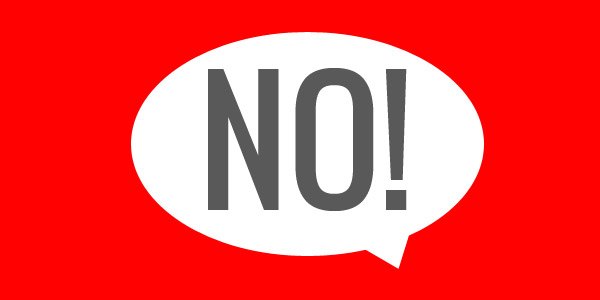
The 6 Steps to Saying NO – and Not Getting Fired!
Will saying “no” cripple your career? No! In fact, saying “no” can help you succeed.
Seriously!
This is a tough concept for many to grasp. As a professional career coach for CPAs, I work on this issue a lot. However, you don’t need to be a public accountant to benefit from learning how to say “no.”
Most people say “yes” because they want to be a team player, model positive workplace attitude or simply to be liked. But the ability to say “no” is actually an asset. It earns you respect, allows you to focus and saves your sanity.
Whether you’re being asked to take on a new project, join another charity Board of Directors or attend an associate’s dinner party, requests for our time and energy seem un-ending. Learning to say “no” is a starting point to putting yourself on equal footing with others.
Knowing when and how to say “no” is a critical life skill. There’s a right way and a wrong way. Telling your boss to “buzz off” or a non-profit organization to “get lost” is the wrong way.
Here are six simple steps to doing it right:
- Think First. Speak Second. Take time to consider the request. Process what is being asked of you. What are the tasks involved? Does the request match your skills and expertise? How much time will it take? How does it fit into your current commitments? What advantages, if any, are there for you.
- Say No with Grace but Authority.
- Respond to the request in person. Emails and texts can be misunderstood.
- Explain why. For example: “I have five current engagements and need to focus on the success of those projects.”
- Be Brief. Don’t ramble on about your workload or try to explain your entire calendar of commitments.
- Be a Resource. Offer a fresh idea or perspective while explaining your current commitments prevent more in-depth involvement.
- Stand Firm. Or as firm as your position will allow. If you’re low on the totem pole, you may need to negotiate your involvement. Otherwise, be clear on your decision….in a gentle way.
- Offer an Alternative. Suggest tackling the project at a time better suited to your schedule, recommend an equally or better qualified person or present a compatible solution.
- Ask for Priorities. You’re not the only one with a full-plate. Simply ask for help in setting priorities. For instance, “I am working on these five projects. In order for me to accept this project, how would you like me to prioritize my work load?”
Setting boundaries and clearly defining them will allow you to stay focused. Staying focused allows you to do your best work. Doing great work will get you noticed and give you solid footing on the ladder of success…all thanks to not being afraid to say “no.”
Interested in more career nutrition? Check out the Career Wellness library on the SterlingFreeman website.
Go To SterlingFreeman - Career Wellness
